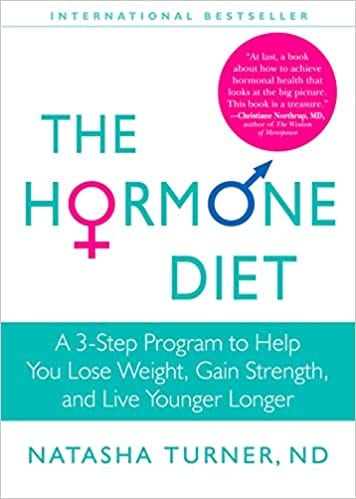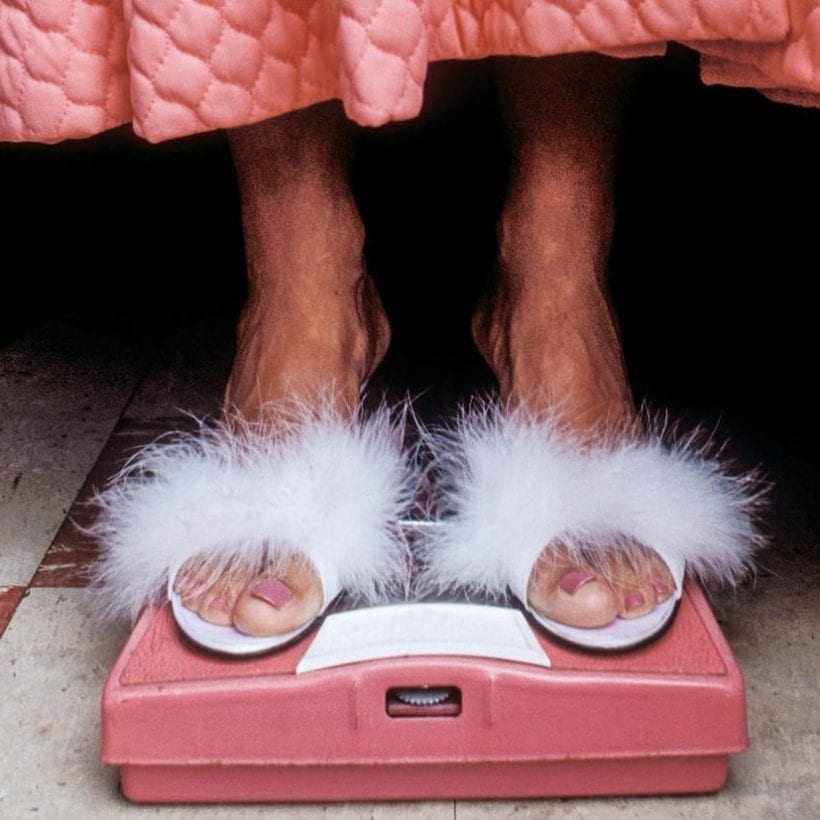There are a lot of trends and fads to choose from when it comes to weight loss. There’s keto (basically, low carbs; high fat), paleo (otherwise known as the “caveman” diet), and whole 30 (where you eliminate foods for 30 days) — to name a few. Thanks to the #Quarantine15, there’s another diet that’s gaining more and more traction: The “hormone diet.”
Amazon lists over 1,000 book results when you search for “hormone diet” so it’s actually been around for a while. It’s based on the idea that people can lose weight in a healthy way by using a very specific diet (as well as a commitment to exercise) to “reset” their hormones aka correcting hormonal imbalances in your body.
How do hormones relate to your weight?
In order to understand the correlation, it’s important to first break down what hormones do. You have over 50 of these “chemical messengers” that travel through your bloodstream and they’re essential for a whole array of functions — from your blood pressure to your sex drive.
For example, insulin, a hormone made in the pancreas, converts sugar from carbohydrates into energy. Cortisol, a steroid hormone, plays a role in how your body responds to stress. Estrogen is a sex hormone that’s important to a person’s reproductive system. There are also specific gastrointestinal hormones (like gastrin and secretin): “When food goes into your gut, your gut produces hormones that absorb it and metabolize it,” says Kevin Shotliff, M.D., a hormone specialist and consultant in diabetes.
There are various tweaks you can make to the hormone diet, but one popular best-selling book, The Hormone Diet by Natasha Turner, uses a three-step program to “resetting” your hormones. The author suggests you must first “detox” your body. In the first step, you remove caffeine, alcohol, sugar, red meat and full-fat dairy from your diet. It will remind you of Whole 30. Instead, you eat lean protein, vegetables and some fruit, unsaturated oils and whole grains that increase fiber intake. In step two, you avoid “hormone-hindering” foods. These include processed foods, some processed carbs (like white flour and white rice), artificial sweeteners, refined grains and foods that contain nitrates (like processed meat). The last step concentrates on exercise and strength training.
What’s involved in the “hormone diet?”
While there may be variations, here’s what you can expect from following this diet, according to Turner’s main principles.

What you can eat:
Chicken breast, eggs, fish, soy, plant kinds of milk, dairy from sheep or goats, all vegetables, most fruit, chia seed, flaxseed, most nuts, olive and canola oil, buckwheat, brown rice and quinoa. It’s very similar to a Mediterranean-style diet with food that is low on the glycemic index, which means food that slowly raises your blood sugar levels.
How much you work out:
Turner recommends a mix of strength training and cardio for 30 minutes, six days a week.
Difficulty level:
It will be a big adjustment if caffeine, alcohol, sugar, dairy, gluten and oils play a role in your daily life — you’ll have to cut them out for two weeks. If you’re not big on cooking, eat out often, or rely on takeout, your options will be limited because of the need for simple meals. However, it could be an easier transition for those who are already vegetarian, vegan, or gluten-free as gluten is off-limits for the first two weeks. It’ll also be a major change to your routine if you don’t already incorporate fitness into your life.
Time commitment:
It takes about six weeks to complete the program. In your day to day you’ll want to consider the extra time and effort it’ll take to prepare meals in accordance with the diet’s guidelines — and you’ll also have to fit in a regular exercise routine.
Cost:
You might even save some money when cooking for yourself more often in lieu of dining out or ordering take-out regularly. However, eating organic typically costs more. Turner’s version of the diet includes taking supplements like multivitamins, probiotics and omega-3 fatty acids that may add to your budget.
Expected weight loss:
This diet aims for losing up to 12 pounds in the first phase. Then, two pounds a week after that.

Who can the “hormone diet” work for?
It could work for almost anyone, but here’s the thing: While the diet has good intentions, “most of these types of diets work because they are restricting calories, not because they are altering your hormones,” says Shotliff. Since hormones are so complex, it’s extremely difficult to directly link weight loss to “altering” hormones — and currently, there isn’t concrete scientific data to back it up. The focus on clean eating, plus habitual cardio and strength training are important things people should be doing whether they’re on the “hormone diet” or not.
It’s important to note that this diet isn’t for people with hormonal imbalances because of underlying health issues like an underactive or overactive thyroid. If that’s the case, check with your doctor before starting any new diet or routine.
Furthermore, we question if the rapid weight loss in such a short amount of time likely will set you up for long-term success. A healthier rule of thumb is losing one or two pounds a week. But, if you feel like seeing super-fast results upfront can help a more sustainable, long-term routine, the “hormone diet” could be worth a shot.
“The calories in – calories out model may work for some, but for the patients that I have seen over the years, caloric restriction is not the answer to long-lasting weight loss, especially for women aged 35 and beyond (the age when metabolism slows down),” says Dr. Sara Gottfried, physician and author of The Hormone Cure. So if you’re experiencing a slower metabolism, this could also be a way for you to kickstart weight loss.
Intrigued? 5 books that break down the “hormone diet”

Gottfried, a Harvard-educated physician, combines natural therapies with rigorous testing. She puts forward an approach based on her own experience that “key hormones like cortisol, insulin, estrogen, and growth hormones are involved in that stubborn extra weight around the waist,” she says. It’s a 360 approach to restore sleep, improve energy and mood, lose weight and boost productivity.

One of the first books to put hormones center stage of the weight-loss conversation, Turner tells readers about the sixteen plus hormones (like cortisol, estrogen and insulin mentioned above) that impact weight loss. With advice across food, sleep, exercise and stress, this is a do-it-all guide to try out the trend.

Based on the principle that a peak in the stress hormone cortisol could lead to weight gain (when cortisol levels increase it may also lead to an increase in blood sugar), Christianson’s patient-tested weight-loss program is the culmination of decades of clinical experience. In this book, Christianson sets out his method alongside an eating plan and recipes.

Dubbers dig into how the female endocrine system impacts mood, energy, weight alongside tasty recipes for optimizing hormone health.

In this healthy eating guide, nutritionist and chef Ellice-Flint shares 80 whole food recipes to nourish the body and attempt to balance hormones.
We only recommend products we have independently researched, tested, and loved. If you purchase a product found through our links, Sunday Edit may earn an affiliate commission.







